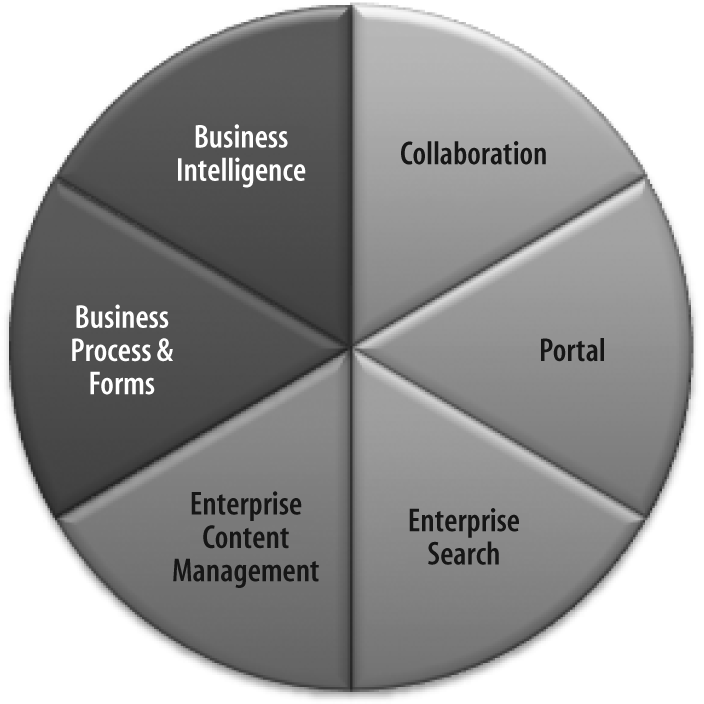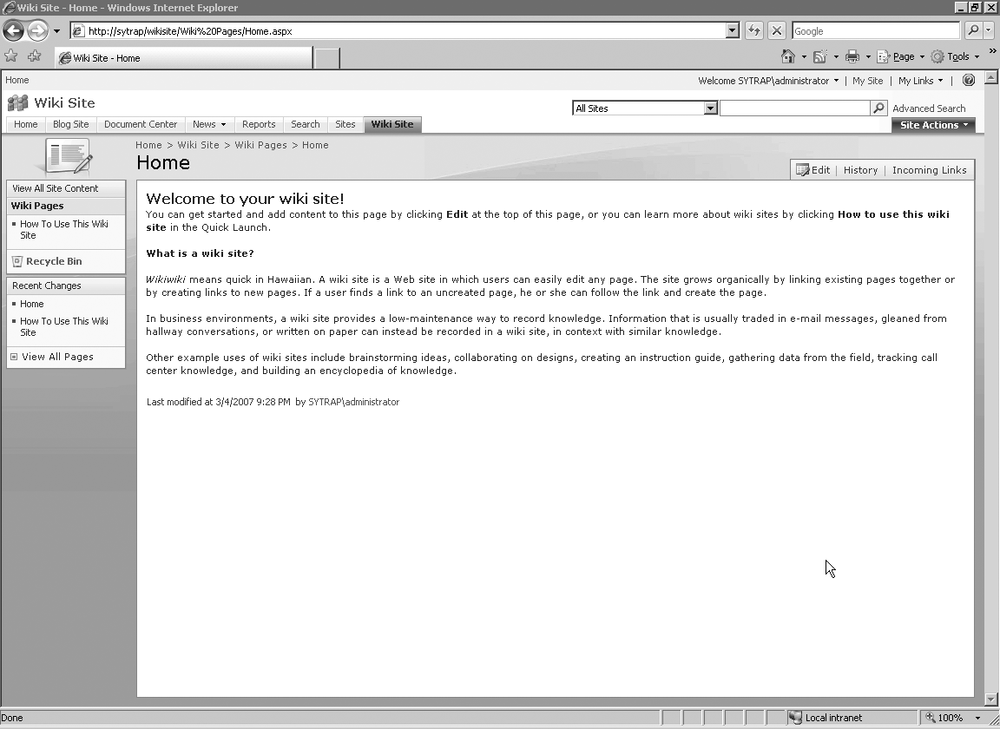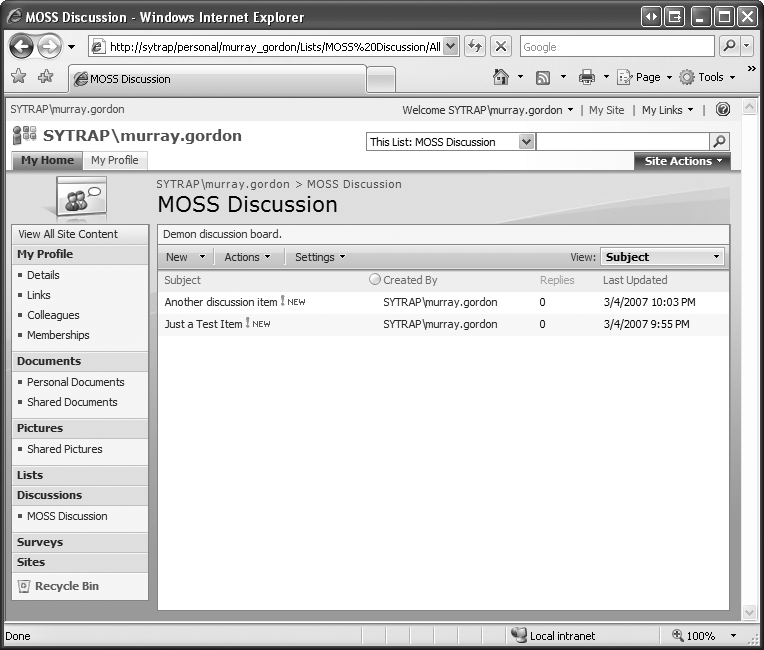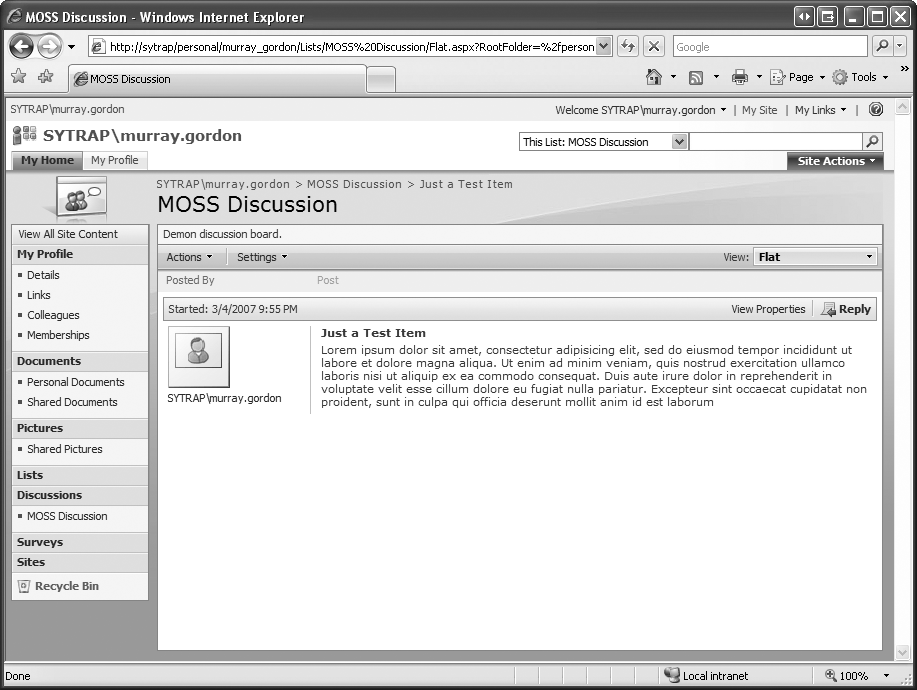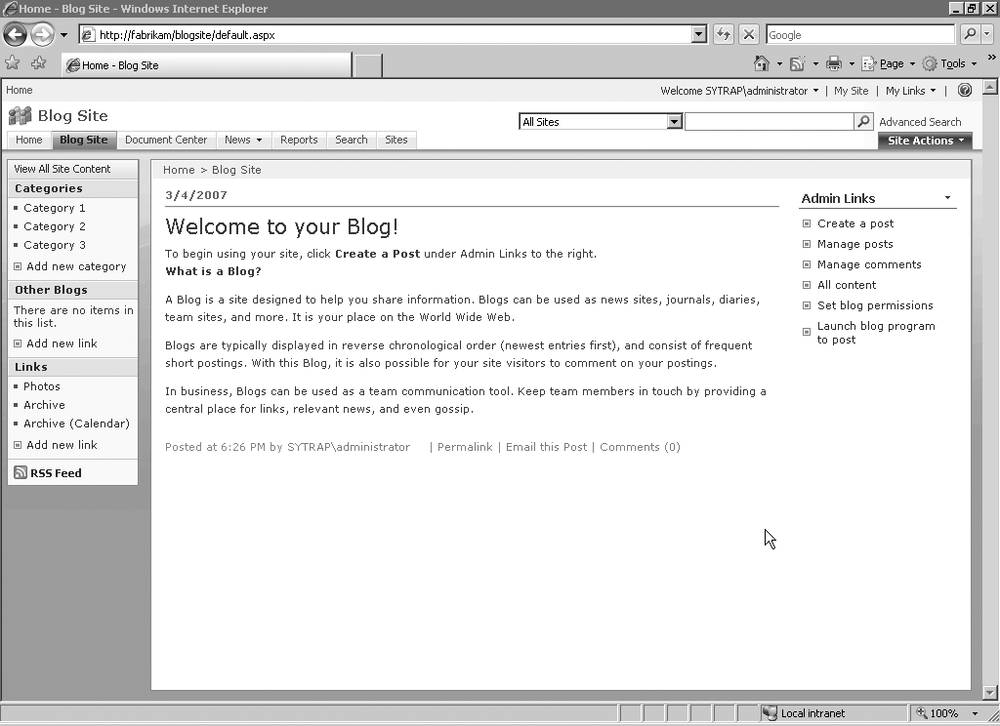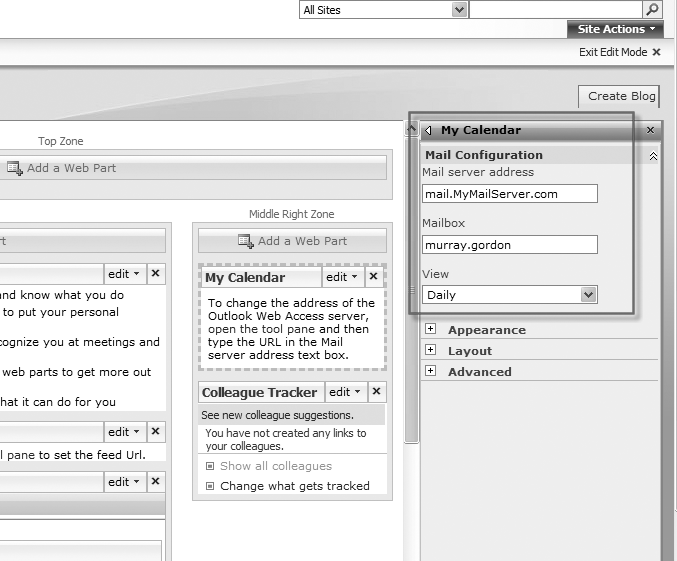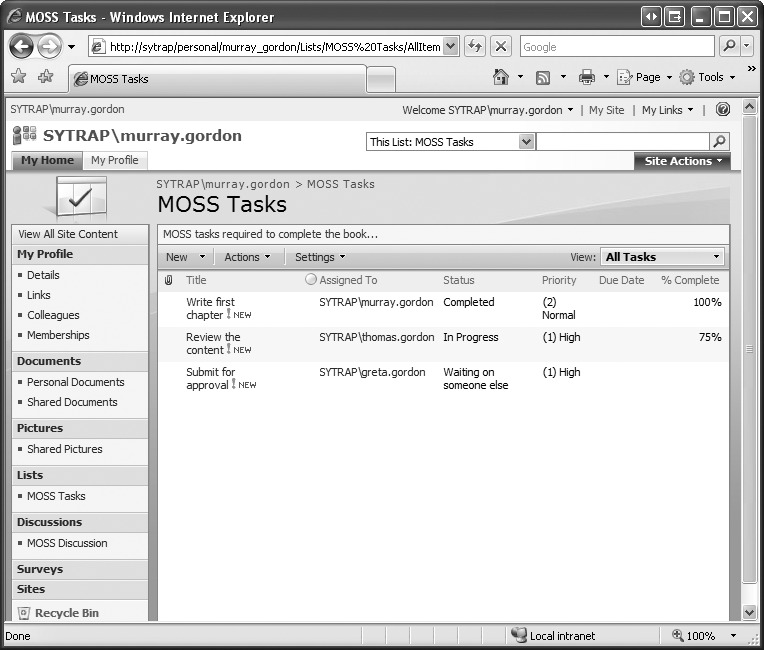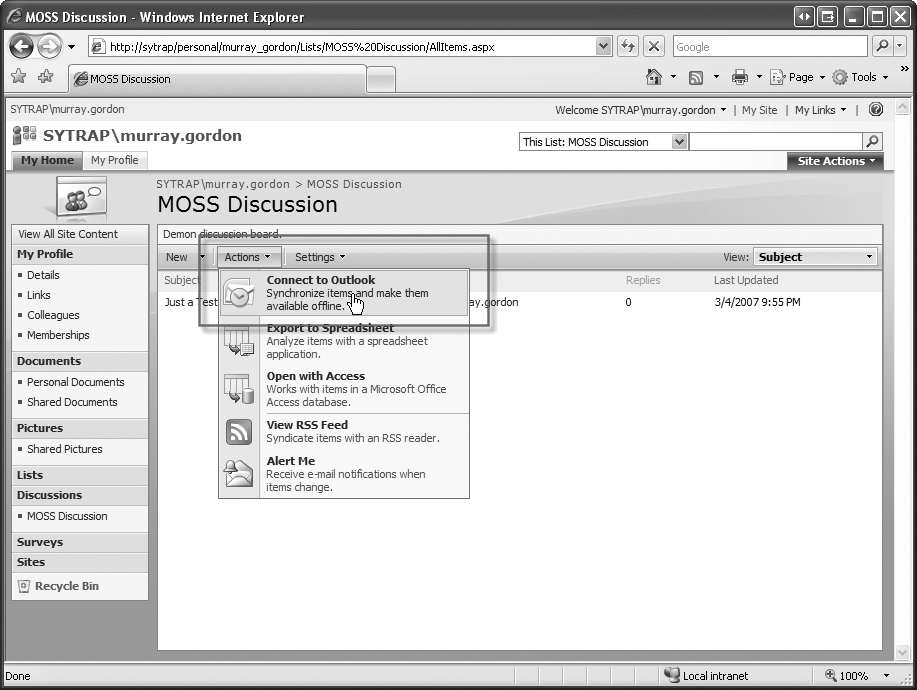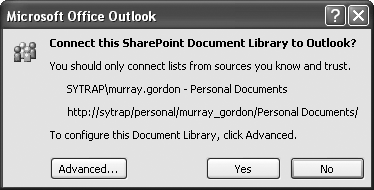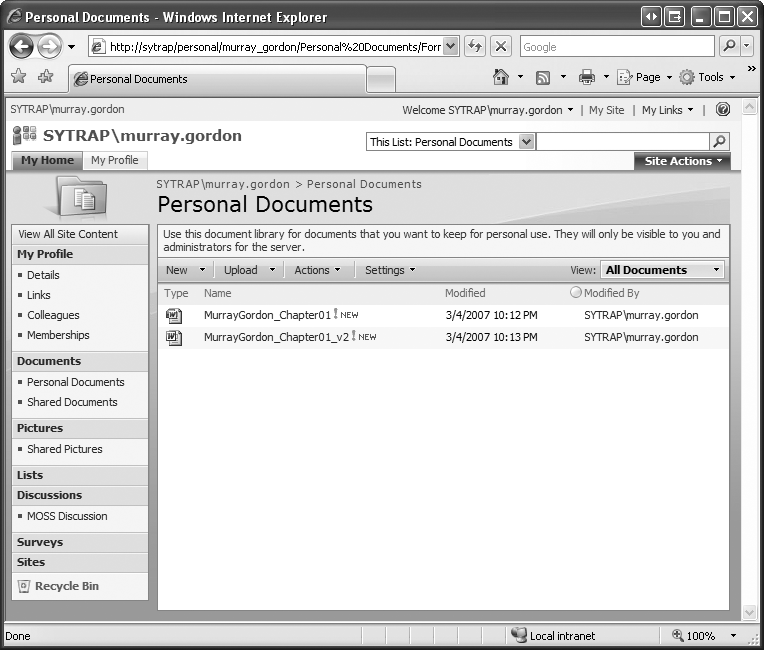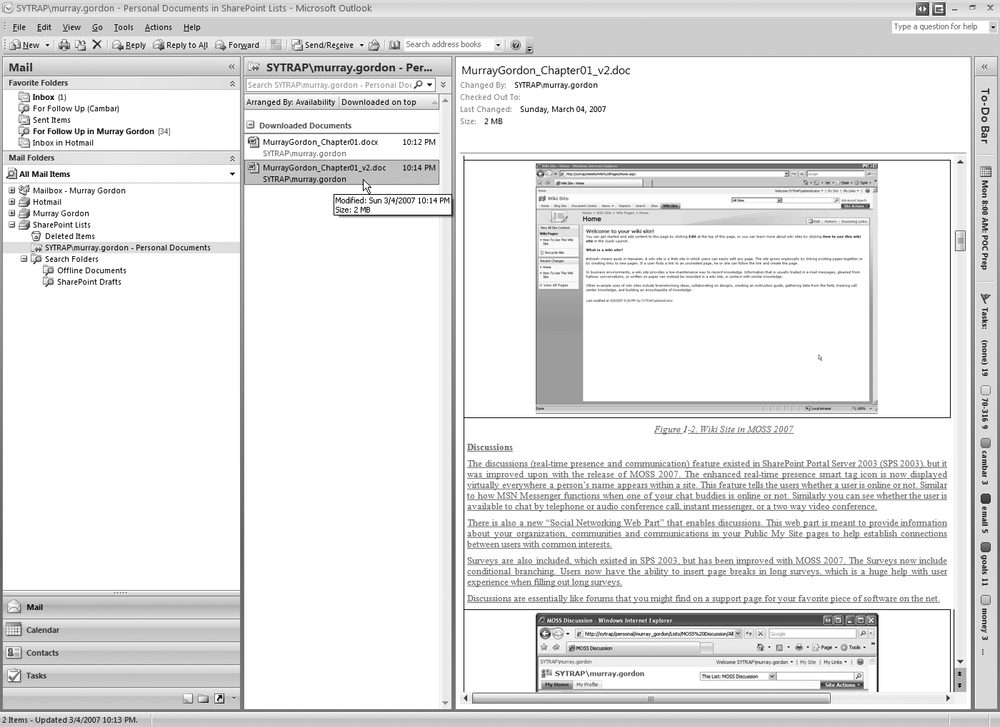Microsoft Office SharePoint Server 2007, or MOSS, is a product of two factors. Both are changing the way businesses operate, in what Microsoft commonly refers to as the "new world of work."
The first factor is that teams working together are typically located in different locaions throughout the country, or even the world. This presents some interesting challenges to collaboration between teams both within and outside of an organization.
The second is that there is an explosion of content created within these organizations. Documents and content of all shapes, sizes, and types are being created every day, and companies are struggling to keep up with this content explosion and increasingly complex compliance requirements, while enabling users to collaborate and share information. Organizations must allow effective collaboration in order to stay competitive, but they also must satisfy the security and privacy issues associated with collaboration in order to keep their competitive advantage and remain compliant with corporate regulations.
Microsoft has developed SharePoint to provide organizations with a solution to these complex business problems. MOSS brings together six key functional areas of features and benefits that allow organizations to more effectively address these industry phenomena and stay competitive. These areas are Collaboration, Portal, Enterprise Search, Enterprise Content Management, Business Process and Forms, and Business Intelligence (Figure 1-1). This chapter introduces these functional areas and explains their respective features.
The bottom line with Microsoft Office SharePoint Server 2007 (MOSS 2007) is that it helps organizations get more done. The Collaboration area of MOSS allows users to share information and work together.
MOSS is a critical piece to Microsoft's collaboration vision, and provides a hub where all Microsoft Office products can integrate effectively.
The "Collaboration" functional area can be summed up with the following feature list:
The document collaboration feature includes the following elements:
The ability to check out documents locally.
Direct support within Microsoft Office Outlook 2007 for an offline document library. This allows users to work on documents when they do not have access to the MOSS server.
The ability to use major and minor version numbering and tracking in document management. This is a valuable feature, particularly if you have ever worked on a team where documents are being updated by multiple users simultaneously.
Direct support for multiple content types. These content types include Microsoft Word, Excel, PowerPoint, Access, and others. Other types are recognized if the corresponding application type is installed on the MOSS server. Vendors also can create add-ins to MOSS that allow native MOSS support for that content type. This makes MOSS very extensible for vendors.
Policies, auditing, and workflow are also included. This is great for managing the flow of a document's usage throughout an organization.
Tree-view support allows users to structure an organization of documents and content that is easier to interpret and act on. Similar to Windows Explorer, MOSS enables this same type of document and content organization within MOSS.
The "wiki" template is a new site template in Windows SharePoint Services 3.0. Similar to the wikis throughout the Internet, and best demonstrated on www.wikipedia.com, wikis allow users to easily create, edit, link, and restore individual web pages. Wikis are typically used as creative forums to brainstorm ideas, manage knowledge bases, create designs and instruction guides, or simply gather information in an easy-to-edit format. Wikis are easy to create, modify, and annotate. These features, along with the ability to track contributions and changes, make wikis a perfect addition to MOSS. Wikis also leverage the existing MOSS functionality included in search, navigation, alerts, and custom fields (see Figure 1-2).
The following are key features included in MOSS wikis:
The discussions (real-time presence and communication) feature existed in SharePoint Portal Server 2003 (SPS 2003), but it is improved upon with the release of MOSS 2007. The enhanced real-time presence smart tag icon is now displayed virtually everywhere a person's name appears within a site. This feature indicates whether a user is online, similar to how MSN Messenger functions when one of your chat buddies is online. Additionally, you can see whether the user is available to chat by telephone or audio conference call, instant messenger, or a two-way video conference.
There is also a new "Social Networking Web Part," which provides information about your organization, communities, and communications in your Public My Site pages to help establish connections between users with common interests.
Surveys are also included. These existed in SPS 2003, but they have been improved with MOSS 2007. Surveys now include conditional branching, and users can insert page breaks in long surveys—a huge help when filling out long surveys.
Discussions are essentially like the forums that you might find on Internet support pages for your favorite pieces of software (see Figure 1-3 and Figure 1-4).
Blogs provide a function that has been popular on the Web for the past few years on sites such as Blogger, Wordpress, Movable Type, and MySpace. This feature provides a publishing-oriented experience for a single user or a team. Users can publish content and receive feedback on that content. Windows SharePoint Services 3.0 includes a Blogs site template that supports the following (see Figure 1-5):
Article posting
Reader comments
Archive views
RSS feed generation
The contacts ("People and Groups") lists offer a unified place to find and communicate with people. It also allows easy management of users' permissions. There is support for custom fields, such as Department, Office #, and Area of Focus. There is also a new Person field type. This field type enables the creation of rich displays of lists of people, as well as the use of a People Picker control for browsing a list of users. The Member Group allows reuse of groups across sites as well as distribution lists for the members of a site. All of these elements make it much easier to manage users and bring team members together.
The Calendars have been enhanced in MOSS 2007 with richer calendar views and expanded support for recurring and all-day events. This more closely mirrors how calendars behave in Outlook 2007.
You can easily synchronize your MOSS calendars with your Exchange or Outlook calendar (see Figure 1-6).
Task lists have been a staple of SharePoint since its creation. The Tasks template provides lightweight task management functionality (Figure 1-7). The new Project Tasks template includes Gantt charts for visualization of task relationships and status.
The Email Integration feature allows for document libraries, discussion boards, calendars, and announcements that can receive new postings via email. This makes it very easy to post items without logging into MOSS directly to make additions, which is a great time-saver. In addition, extensible support is provided for custom email handlers in Windows SharePoint Services 3.0.
Features that are similar to that of public folders in Microsoft Exchange Server are also available. These email-enabled discussion boards support:
A scalable topic-based architecture
"Super rich-text" field types
Unified experience for both email- and web-based discussions
One-step creation of Active Directory distribution lists as a part of site creation
Unified MOSS group and Active Directory service management functions
Outlook integration is very seamless, and you can integrate nearly everything you use in Outlook into your My Site in MOSS 2007.
From within MOSS 2007, you can easily sync content to Outlook (Figure 1-8).
With Office Outlook 2007, users can view calendars and contact lists stored on SharePoint sites, and can create and manage sites for editing documents and organizing meetings. Microsoft Office Outlook 2007 and Windows SharePoint Services 3.0 support a new set of significantly enhanced features, including:
Check out and edit documents offline with true Smart Client capabilities
Roll-up views of calendars and tasks across multiple lists and sites
Synchronization of offline document libraries and lists
View of personal and MOSS tasks in Outlook 2007
Read and write access to MOSS calendars, tasks, contacts, discussions, and documents from Outlook 2007 (Figure 1-9)
As mentioned previously in the Tasks feature, the new Project Tasks list template provides lightweight task management functionality. This template also includes Gantt charts for visualization of task relationships and status. This is great for coordinating teams of users while executing a specific task list. This is more of an ad-hoc project management tool, which is all many users and small teams need to get the job done.
Tight integration into Outlook 2007 gives users the ability to work on lists that are available online in MOSS as offline content when the user is either disconnected from the Internet or working remotely. Once the user has reconnected to the MOSS server, the content synchronizes with the MOSS server (Figure 1-10).
You can easily look at documents from the MOSS server within Outlook 2007 as if it were any other type of email document (Figure 1-11 and Figure 1-12).
Get SharePoint 2007: The Definitive Guide now with the O’Reilly learning platform.
O’Reilly members experience books, live events, courses curated by job role, and more from O’Reilly and nearly 200 top publishers.
